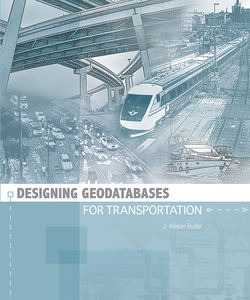Читать книгу Designing Geodatabases for Transportation - J. Allison Butler - Страница 30
Geodatabases
Оглавление• Subtypes
• Origin and destination tables
This book shows how to build geodatabases that can be easily edited. In chapter 2, the geodatabase was shown to be an object-relational database that the user customized to provide the data and behavior desired. The object-oriented foundation of a geodatabase offers advantages, such as extra functionality, over a purely relational database. Many of the functions you would normally have to program, like domain checking and rule enforcement, are already part of the geodatabase.
Other geodatabase benefits that are especially useful for transportation datasets are:
• The dataset is continuous. In the past, traditional spatial data structures needed to subdivide their spatial data into tiles of relatively uniform density. Transportation datasets can be quite large. The geodatabase is continuous regardless of database size so a tiling scheme is unnecessary to efficiently manage data.
• The data is uniformly managed. Data with and without geometry can be managed in a single repository, assuring that both kinds of data are integrated and internally consistent. This book will show you how to asynchronously edit feature and object classes to preserve referential integrity.
• Many users can edit the data simultaneously. In larger transport agencies, several workgroups likely would be responsible for editing various portions of the enterprise dataset. The geodatabase can handle simultaneous editing cycles located at multiple sites.
• Data entry quality assurance is built in. One of the critical concerns for maintaining large datasets is assuring that only good data is put in. The geodatabase provides mechanisms to control what is entered into the dataset.
• Users work with more intuitive data objects. A properly designed geodatabase presents the user with multifaceted objects that combine spatial and nonspatial data into a single composite. Spatial features are no longer “dumb” points and lines but become roads, train stations, and bus stops. Nor is each type of object isolated from the others. By using an integrated geodatabase, you can maintain the relationships between objects. You can even use them during editing to specify what happens to other features when you move or modify a different feature.
Designing a geodatabase is a process of deciding which capabilities to use. You are not starting from a blank sheet of paper. The basic framework for an efficient enterprise design is already in place inside the geodatabase.
